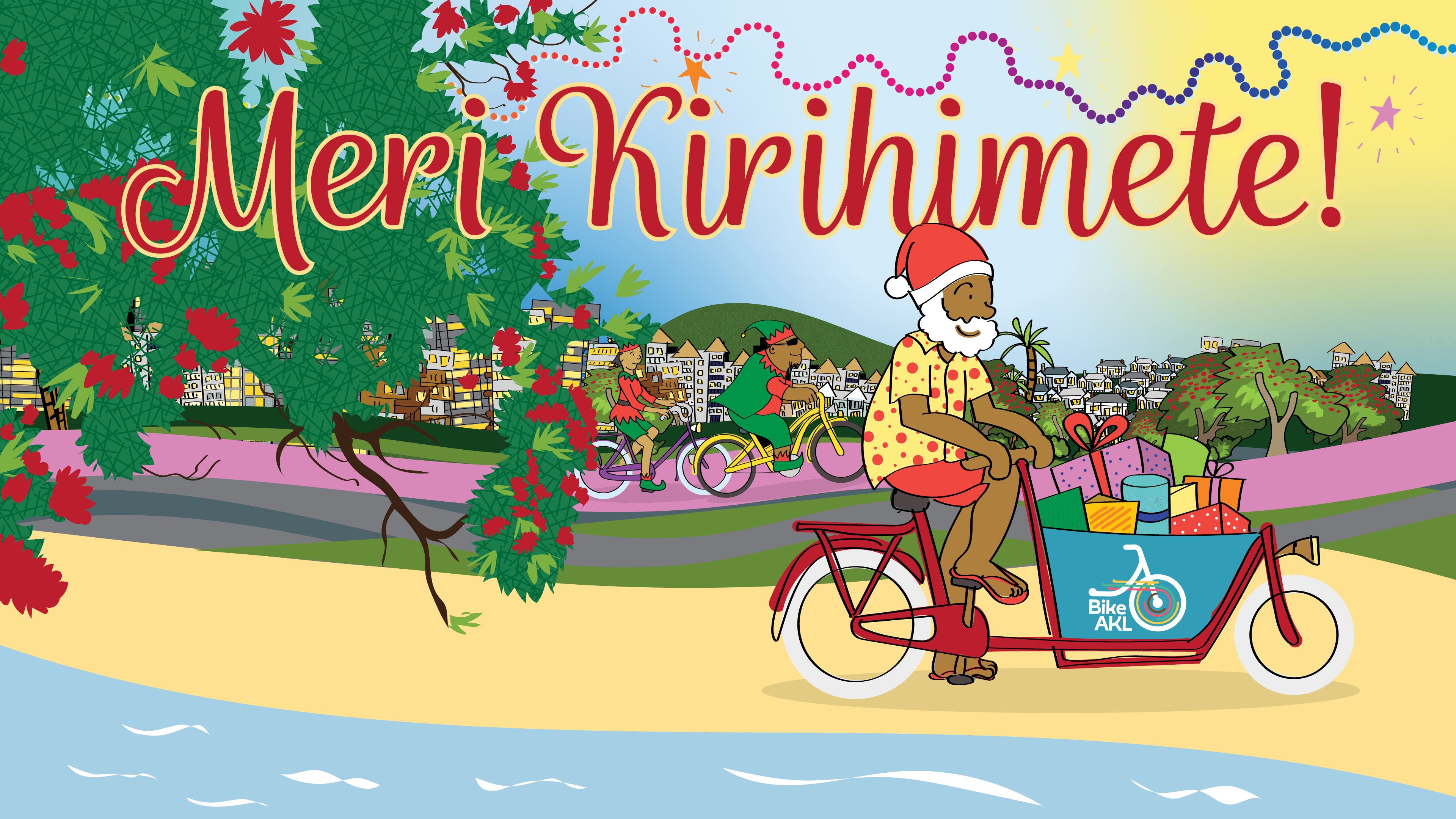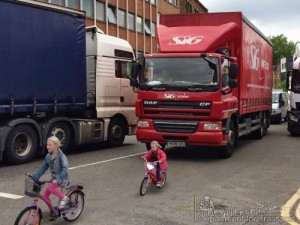
Take a look at these powerful images from the blog Alternative Department of Transport, created by transposing typical Dutch cyclists into a British street environment… which could just as easily be a New Zealand street environment. (The images were so popular, there was a follow-up post with more.)
Straight away it becomes blindingly obvious why women, children and the elderly are so underrepresented among regular cyclists in NZ. It also demonstrates why most people put themselves in a majority group who would love to cycle more but don’t feel safe doing so.
You will notice that all the British scenes are in nice flat areas – none of those nasty hills that apparently doom cycling in Auckland (yet flat Christchurch, Hamilton and Palmerston North have the same cycling rates, while hilly Nelson is a national leader in cycling).
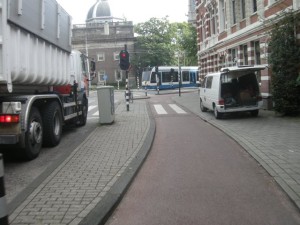
But my natural reaction on seeing these children and families cycling in British streets is to regard them as being in danger. Trucks are whizzing by very close to the cyclists, and there is no separation of the bicycles from the motor traffic.
Of course most people won’t cycle in that atmosphere. I am a very confident cyclist and I don’t want to cycle in that atmosphere.
The article also makes the point that no amount of training or vehicular cycling skills will change that. Instinctively, most human beings will look at the street environment in the British photos and consider the risk as being too high.
And its not just about risk. People also want to enjoy their cycling, and be able to relax. To me that is just one of the positives of cycling around town, and the lower speeds it is usually done at – I can relax and enjoy the ride, I don’t need to be on constant guard against dangers.
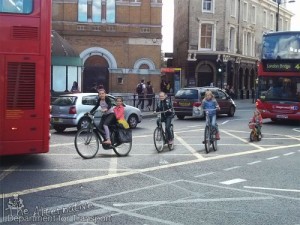
But most arterial roads and even streets in residential areas in New Zealand do not offer that experience. We don’t need separated paths for cycling everywhere (after all, the Dutch don’t have that) but where they don’t exist, we need to slow traffic down and make streets suitable for all users, not just the ones in metal boxes.
There is so much debate – even in the cycling advocacy community – about what is needed to make cycling grow. I am often confused by that debate as it seems so obvious. All we need to do is look at the countries that have made cycling a part of everyday life, with the Dutch as the highest exemplar of what can be achieved.
The problem holding back cycling isn’t hills, weather or distances. It is the lack of the three “I”s. Infrastructure, infrastructure, infrastructure.
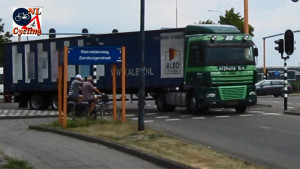
For that infrastructure to happen, we need two things – One, a higher percentage of the transport budget to be allocated to cycling, and two, the political will to put the infrastructure in place – even over the (usually ill-informed) objections of residents and businesses.
The business case has been proven again and again. It is time to make real progress and put in place a street environment that will lead to real changes in how New Zealanders choose to make short trips.



